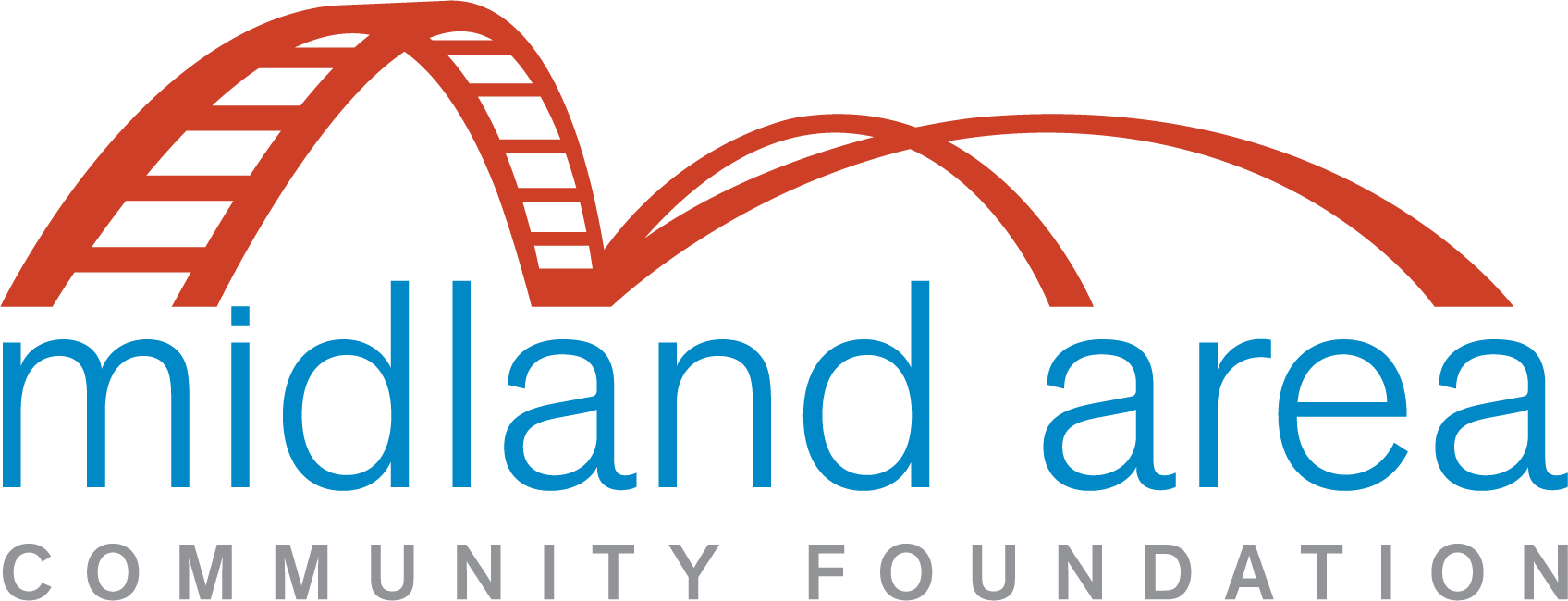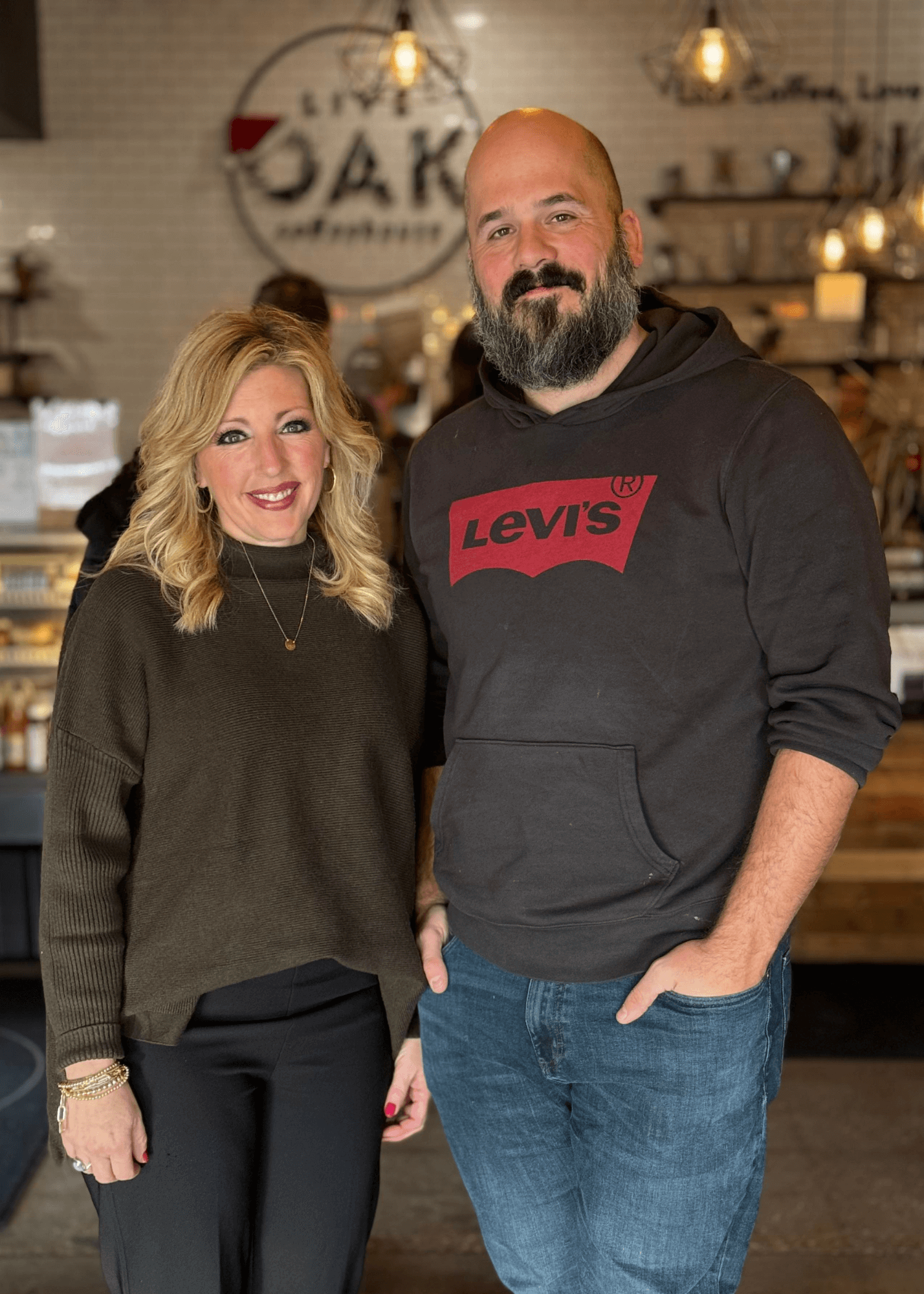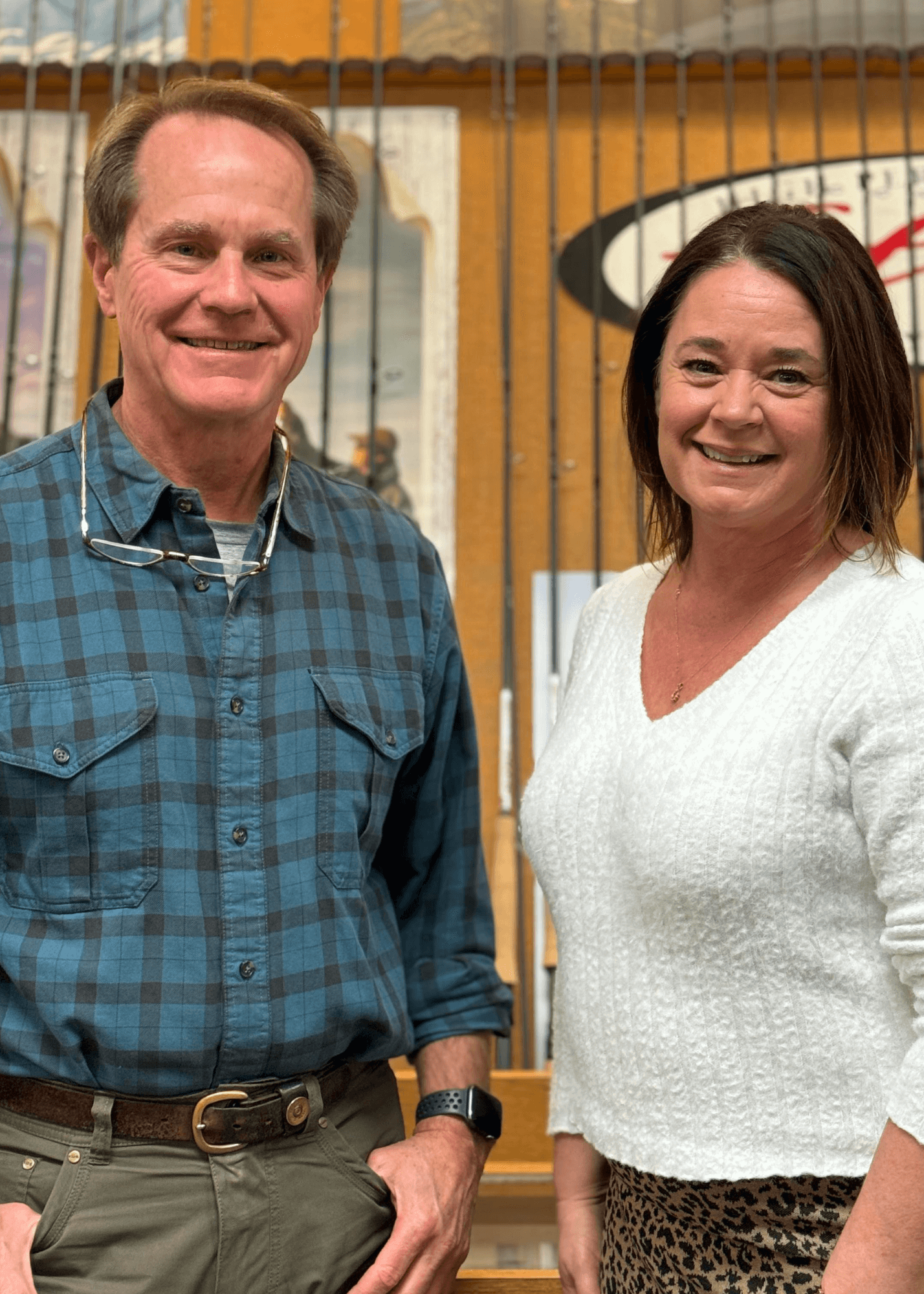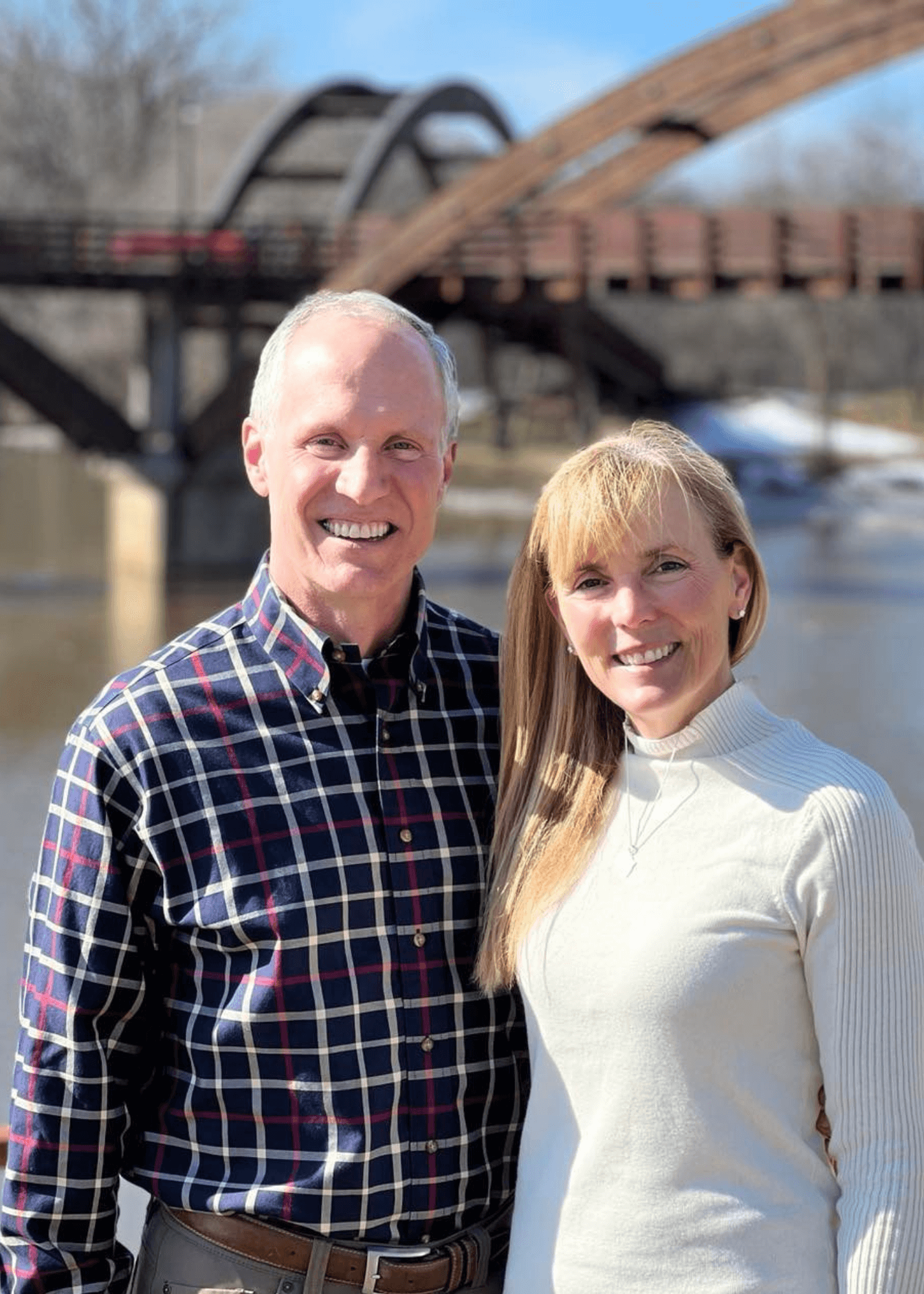Prologue: “When the Community Foundation embarked on our storytelling campaign, 50 Stories for 50 Years, I was extremely excited for everyone to experience some of the fantastic stories I’ve heard throughout the Foundation offices for the last few years. So many incredible people, faces, names, lineages, and stories comprise the Midland Area Community Foundation. Community foundations are made up of the people and for the people. Working on another rewarding people-focused project that reflects our history was my pleasure.
As soon as we began discussing who would work on these stories, I knew I wanted to work with Phil Eich (Storyville Social) and Renee’ Deckrow (Live Oak Coffeehouse, Captured Photography). I’ve always admired Phil’s ability to capture people’s authenticity. His documented stories are informative, and their impact on our region and beyond cannot be overstated. Renee’s incredible coffeehouse feels like a second office for the Midland Area Community Foundation. It’s a vital third place where people meet, share art, make friends, and exchange stories.
It’s my pleasure to ‘flip the script’ and bring you their story.” – Kevin LaDuke, Communions Officer of the Midland Area Community Foundation
Phil Eich and Renee’ Deckrow – In Their Own Words, Documented by Kevin LaDuke
Phil: “I was a middle school teacher in Bay City when my twin brother lost his job. He moved in with me to figure out what his next step was going to be, and he started a business in my garage building steel-body acoustic resonator guitars. Unknown to us at the time, he was one of two people in the world to build these kinds of guitars by hand, so business took off, and he ended up with a three-year-long waitlist. I was looking for a way out of teaching, and he was looking for somebody to help him start this business, so I left teaching to work for him and we moved to the City of Saginaw. We worked out of his basement for a year and then moved into a shop.
Then I went broke. I started having to buy my groceries with a credit card. The turning point came at the Meijer on Tittabawassee Road [in Saginaw] when I swiped my credit card, and it was declined because I had maxed it out on buying food. I walked out in the parking lot and said, ‘What is something I could do right now that people would pay me money for?’ Along with building the guitars, I also ran our social media and took photos, so I said, ‘Well, if our business needs this service, other businesses might need it, too.’ I picked up a camera and started walking into random businesses in Old Town Saginaw, offering them 60 minutes of free photos so that I could build a portfolio. As I did these little mini photo shoots, I’d ask the business owner questions like, ‘Why did you start this business? Why do you call it this? What do you love?’ I started recording those conversations and putting them on social media to include a bit of context for the photos I posted. People really liked that.
The part of that story I don’t tell very often is along with going broke; I was also dealing with debilitating social anxiety. If you were not a member of my family, I was physically unable to speak to you. My wife, who was my girlfriend at the time, had gotten a text that she was invited to a wedding, which meant I got an invite to that wedding and that terrified me because that meant I’d have to talk to people that I didn’t know. After three months of sitting at my workbench every day, obsessing over how I’d get out of these interactions, I realized that this is not how most people in the world function. Like, it was not a normal feeling of anxiety – I would come in for 10 hours every day obsessing about this thing. I knew there had to be a way to practice interacting with people so that I didn’t feel that way. These little photoshoots became the gateway to practicing interacting with people and asking them questions. It was really liberating for me because I didn’t have to talk about myself. All I had to do was ask, ‘Why did you start this coffee shop?’ They’d be off and running for 20 minutes, and I could get that gratification of interaction without having to make small talk and all of these things. I started a business, and Full Steam Social Media took off.
About a year later, the City of Saginaw was looking for a way to rehabilitate its perception here. You have this city full of the world’s most beautiful people, doing amazing things, making something out of nothing, but the rest of the world doesn’t know that city like that. They were looking for a way to communicate their story. Somebody said, ‘Hey, you should usually consider doing this work,’ and I was like, ‘I have no idea how to market for a city of 47,000 people.’ But I went back to the office and said, ‘Well, if I was going to do this, how would I do it?’ It was a four-word pitch I gave to them: human faces and human stories. If we wanted to tell people the true story of the City of Saginaw, we had to create a platform that would allow the people of Saginaw to tell their own stories in their own words. That’s really kind of the birth of this work, and the birth of my business, Storyville. I don’t really look at myself as a storyteller. It took me a bunch of years to start using that word – simply because it’s simple. I look at myself as a story advocate. The people I interview are the storytellers. They are the people telling the stories.
I grew up as an art kid, and my parents sent me to Blue Lake Fine Arts Camp on the west side of the state the summer after fourth grade. It was a two-week camp. I was stoked. One of the days was Watercolor Day. We took all our easels to the lake in the middle of camp and painted this lake. The instructor looked around at our work and said, ‘When you guys are at lunch, we have a real-life artist that’s going to come in and look at your work. She’s going to write her thoughts on the back.’ We were super pumped because this was the person we wanted to be when we grew up looking at our stuff, and we were all only in fourth grade. We finished our paintings, turned them into our portfolio, and went running to the lunch cabin to pound our lunch and come back.
When we returned, I saw all my friends ripping open their portfolios to see paragraphs like, ‘Oh, I love your composition. I love your technique,’ and all of these other things. I went to my portfolio, and I flipped it to the back. The first thing that caught my eye, and I’ll never forget the feeling in my stomach, was seeing mostly blank space. There were only six words, and the six words were, ‘Color and softness should continue throughout.’ I was devastated because I took what she said as she was making fun of my use of color. I took it that way because I’m colorblind. Up until that point in school, the kids that had made fun of me were like, ‘What color is this tree,’ and then laughing when I got it wrong, but this was an artist – a real-life artist saying, ‘I don’t know about all of this.’ I cried the rest of the camp. And when I got home, I was like, ‘Well, this is who I am. This is what I do. My twin brother plays sports. My younger brother’s cool. I’m the art son. So what can I do? What kind of art can I do when no one could ever make fun of my use of color?’ My dad had an old 35-millimeter film camera on a shelf, and I knew if I learned how to use it, I could shoot black and white film. Then, nobody could make fun of my art for me being colorblind.”
Renee’: “I’ve always been a photographer. I started out in junior high school on the yearbook staff. I learned photography on black and white film and how to develop it in a dark room. I remember not being very good at making people’s likenesses with a pencil drawing or painting. Photography was one of those things where I could actually get their likeness but then kind of enhance it. As digital came around, it was all about learning how to highlight people in their best light. I’ve always been fascinated by people – their stories and their faces; l really love people.
One of the first groups that I led was a ‘mom group’ for mothers of preschoolers. Back then, it was the ‘blogging days.’ I had a blog called Real Moms. I would take pictures, and then I would tell their stories. This is literally part of my DNA, too. It’s just interesting how it comes about, right? It’s something that is a core of who I am – wanting to tell people’s stories.
In Live Oak, we have ‘Live with intention, focus on the good, and love your neighbor.’ Focusing on the good – part of that is highlighting people’s stories. There are so many cool things that are going on in our communities. I think if people know about each other – first of all, it’s inspiring. To me, it dismantles any prejudice barrier that we have. Then, there’s just that emotional connection. Once we hear someone’s story, there’s that connection like, ‘Oh, that happened to me too.’ And now we’re joined together with a common mission or interest. That’s been something I’ve wanted to do with Live Oak – create the space for it. Right. I create space for our communities to get together and gather over a cup of coffee. Then, doing the stories – that’s another level.
I think about when my girls were little, and we watched a Disney movie; I remember them at the end of the movie pointing to a girl in the film and saying, ‘I’m that girl.’ Young people look at people and where they are and want to become like others. If we want people to be more generous, kind, considerate, and full of philanthropic spirit, then let’s show people who these people are. They’ve arrived, but how did they get there?
I love knowing how people became who they are today. Part of this project that I thought was interesting is that you often see people who are leaders in the community and think, ‘How will I ever get there?’ But, when they invite you into their struggle, that’s so inspiring. Everybody wants to know that somebody who started with nothing but grit, determination, and passion was able to fill needs.
There’s a quote that I love; It says, ‘Whatever breaks your heart, go and solve that problem.’ For me, it is isolation and loneliness. We solve those problems through coffeehouses and highlighting people in our community so people can feel less alone. Storytelling is a tool. Nobody wants to toot their own horn, right? Storytelling advocates. When someone doesn’t want to toot their own horn, we can say, ‘Let me do it for you. Your story is so important.’ It’s valuable.”
Phil: “The people that are doing the kinds of things that make the community better for everybody are not typically the people to say, ‘Hey, everybody, just in case you forgot, we are responsible for that bridge, and here’s our story, please give us a pat on the back.’ And I love that about them, but in the process, we – as a community, disconnect from the fact that a group of very few people 50 years ago had this idea to make this investment. They had to do the hard work. They had the foresight to say, ‘This is not going to benefit us now and maybe not much in our lifetime, but it’s important for our community 50 years from now to take these actions.’ Fifty years later, it’s really easy for us to take what they did for granted – not only that initial group of people, but all the people since then doing similar kinds of work. I wake up and access a community like this. I get to go walk in parks. I get to see world-class entertainment. I have the privilege of taking these things for granted because I didn’t have to do it. Community storytelling is so important because it’s a way we can say, ‘Look at these people who have given so much to all of us. Here’s their story,’ and through that connection, we can gain a greater appreciation for the things that we have.
I’ve done similar work for Bay City and Bay County, across the state, and across the country, but I hadn’t really done work like this in Midland. I’m not saying anything people aren’t aware of, but the stereotype of Midland is, quote, ‘The most boring city in the state.’ But when you actually sit down, talk to people, and hear their stories, you learn about how Whiting Forest came to be or how we have professional baseball here, you can see that isn’t true; Midland is a community that cares about people and cares about the community. It’s a community full of people willing to do the work and make the investment to give other people things to make their lives better. That is the definition of community.
The worst communities are the communities that are self-isolating. We all live in the same square mileage, but how you move from just being people who live in the same space to being an actual community is through the element of care. In every single one of these stories – from somebody who just graduated high school to somebody who is ninety-plus years old – the one consistent thread is caring for others. These stories are proof and evidence that Midland is a beautiful community full of caring people, trying to bring great experiences and increased quality of life to others. I think these stories are proof not just of the Foundation and its and its work in the community, but the community working for itself.
What I love about the Foundation is that it seems like the Foundation is willing to rethink the traditional role of a foundation within our community. The Foundation has started to rethink that and say, ‘Well, our role is to help the community. How can we do that?”
Renee’: We are a generation experiencing a lot of amazing things that people 50 years ago made happen today. I would love to see us keep that legacy going with a baton being passed to the current community. How are we leaning into that call? How do we keep it going? I’m excited about the invitation. Let’s become an inclusive community where everyone thrives, invites people into storytelling, invites people into solutions, invites people into collaboration, and invites people to the table to give their input.
I wanted to show that all of these people who have done these cool things all started from somewhere. It was a sense of urgency that, ‘I can do something to make a difference today. What is that?’ The Foundation creates a process. The Foundation creates a way of connection and facilitation for individuals who have an idea. We can improve our community by either being connected to something that’s already happening or having a way we can serve through a new thing.
I’m excited about an increased, longer table. Let’s keep welcoming more people into decision-making. A lot of people don’t think that their voice matters. We will only get people from invitation to participation if we let them know that they are valued. There is value in their story, interests, and important things to them. We have to let people know the things that are breaking their hearts are worth expressing.”




